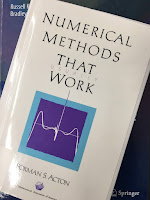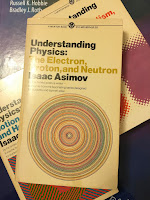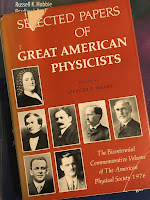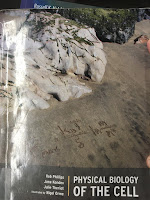This result is true for particles of any mass: atoms, molecules, pollen grains, and so forth. Heavier particles will have a smaller velocity but the same average kinetic energy. Even heavy particles are continually moving with this average kinetic energy. The random motion of pollen particles in water was first seen by a botanist, Robert Brown, in 1827. This Brownian motion is an important topic in the next chapter.We next address this topic in Chapter 4, as we motivate the reader for a discussion of diffusion.
This movement of microscopic-sized particles, resulting from bombardment by much smaller invisible atoms, was first observed by the English botanist Robert Brown in 1827 and is called Brownian motion. Solute particles are also subject to this random motion. If the concentration of particles is not uniform, there will be more particles wandering from a region of high concentration to one of low concentration than vice versa. This motion is called diffusion.As so often happens when you look deeply into a subject, the story is more complicated than can be described in an introductory (or even an intermediate) textbook. In the December 2010 issue of the American Journal of Physics, Philip Pearle and his colleagues published the fascinating article “What Brown Saw and You Can Too” (Volume 78, Pages 1278–1289).
A discussion of Robert Brown’s original observations of particles ejected by pollen of the plant Clarkia pulchella undergoing what is now called Brownian motion is given. We consider the nature of those particles and how he misinterpreted the Airy disk of the smallest particles to be universal organic building blocks. Relevant qualitative and quantitative investigations with a modern microscope and with a “homemade” single lens microscope similar to Brown’s are presented.One interesting conclusion of their study is that Brown did not actually see pollen grains move.
We emphasize that Brown did not observe the pollen move. Instead, he observed the motion of much smaller objects that reside within the pollen.15 Nonetheless, statements that Brown saw the pollen move are common.16Fortunately, reference 16 does not cite Intermediate Physics for Medicine and Biology. But it raises the question: Did Russ and I get it wrong? Our discussion in Chapter 4 seems safe. The text in Chapter 3 depends on if you interpret “pollen particles” as the entire “pollen grain” or “particles arising from pollen.” Russ may have been aware of this distinction when he wrote the original text, but I confess I was not. I always thought Brown saw the entire pollen grain move.
Pearle et al. show electron microscope pictures of pollen grains, which are 50–100 microns in diameter. I summarize their analysis about what Brown saw as a new homework problem for Chapter 4.
Problem 5 1/2. This problem looks at the original observations of Robert Brown that established Brownian motion.
(a) Combine Eqs. 4.23 and 4.71 to determine an expression for the average distance a particle of radius a will diffuse through a fluid of viscosity η in time t.
(b) Assume you observe a pollen grain with a radius of 50 microns in water at room temperature, and that your visual perception is particularly sensitive to motions occurring over a time of about one second. What is the average distance you observe the grain to move?
(c) Now assume your eye cannot see movements that occur over angles of less than 1 minute of arc, or 3 × 10−4 radians (in Chapter 14, we estimate 3 minutes of arc, but use 1 arc min to be conservative). Most eyes cannot focus on objects closer than 25 cm. Determine the smallest displacement you can observe with the naked eye.
(d) Robert Brown had a microscope that could magnify objects by a factor of about 370. What is the smallest displacement he could observe with his microscope? Is this larger or smaller than the displacement of a pollen grain in one second?
In fact, Brown did not observe the motion of entire pollen grains. He observed fat and starch particles about 2 microns in diameter that are released by pollen. For more on Brown’s original observations, see Pearle et al. (2010).The authors also analyze the microscope that Brown used, and estimate the diffraction effects he had to contend with. Using an analysis similar to that presented in Section 13.7 (Medical Uses of Ultrasound) of Intermediate Physics for Medicine and Biology, they show that Brown probably could not resolve some of the smaller particles, but instead observed their diffraction pattern. As in Eq. 13.40 in our textbook, the diffraction pattern involves a Bessel function, and implies that the apparent size of an object is larger than the real size. The effect is minor for large objects but dominates for small objects.
I find the history and analysis of Brown’s original studies to be fascinating. For me, Pearle et al.’s paper reminds me that 1) the American Journal of Physics is still my favorite journal, and 2) physics has much to offer biology and medicine.







